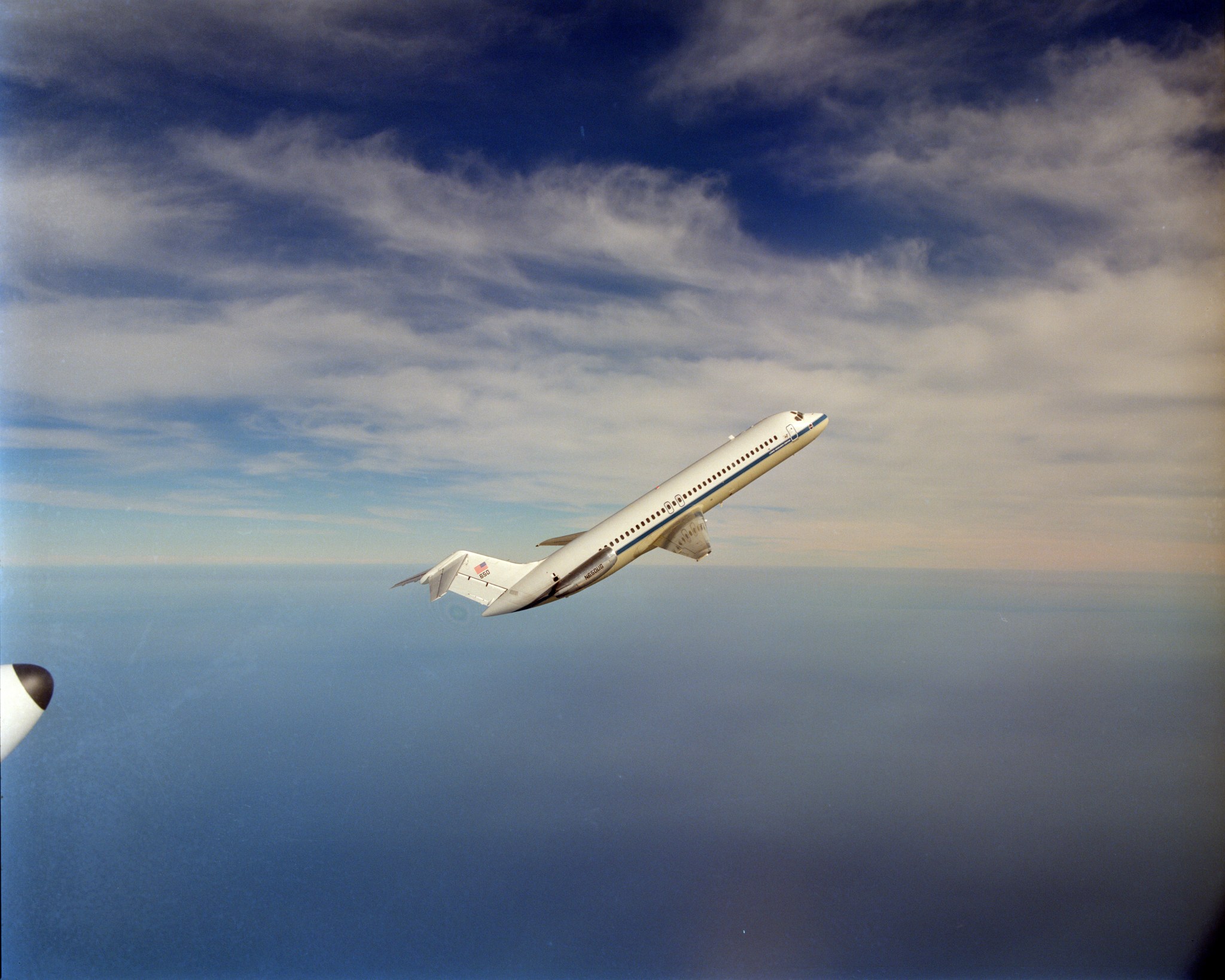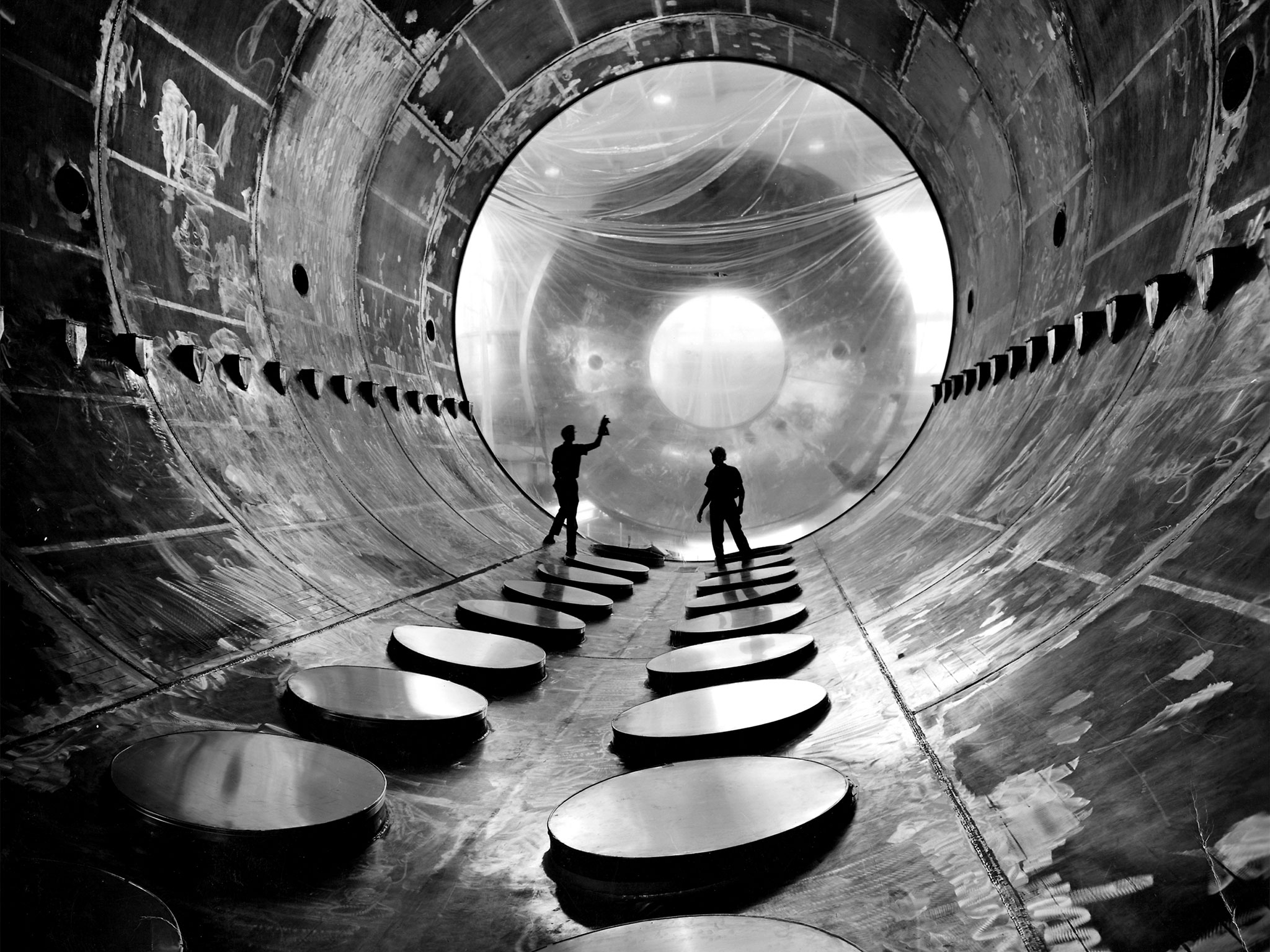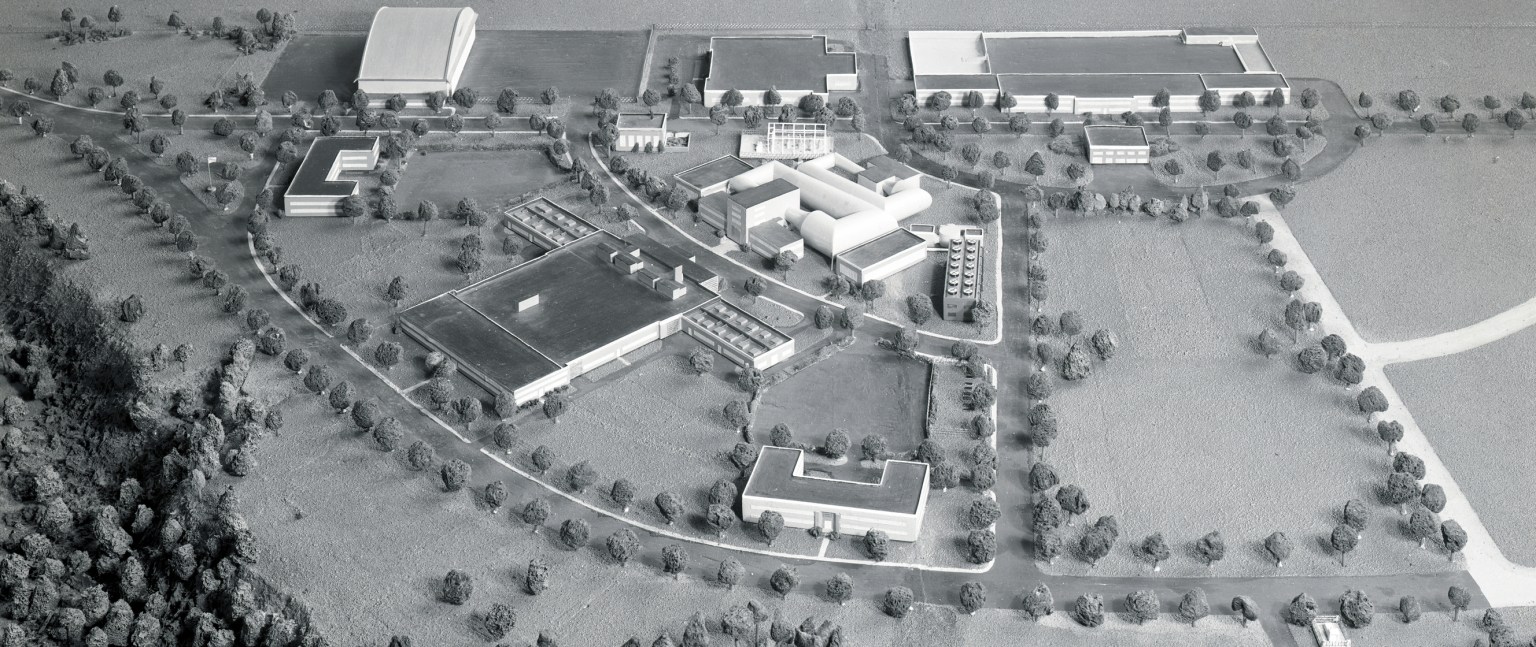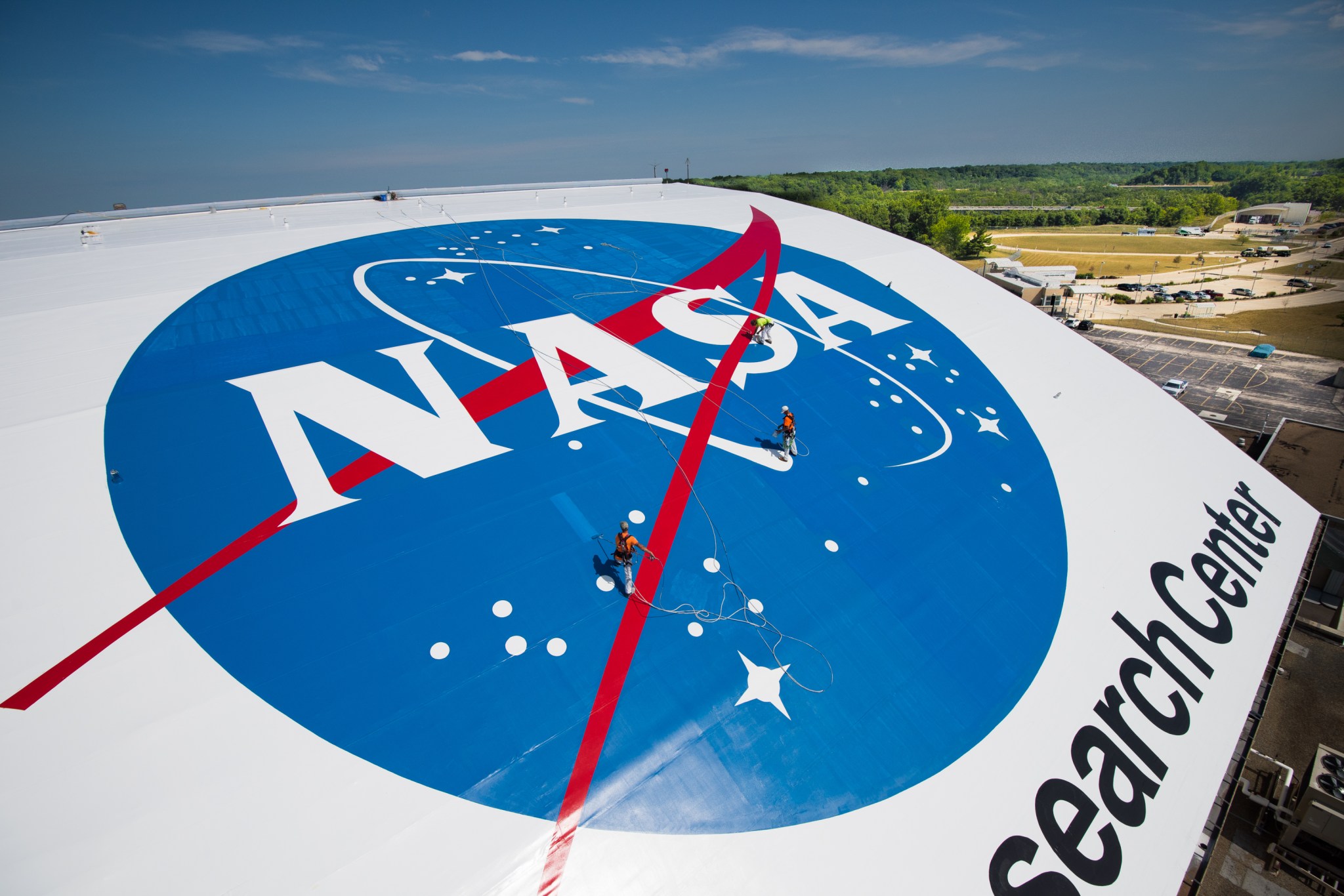NASA Lewis Research Center’s DC-9 commences one of its microgravity-producing parabolas in the fall of 1994. It was the center’s largest aircraft since the B-29 Superfortress in the 1940s. Credit: NASA/Quentin Schwinn A bell rings and a strobe light flashes as a pilot pulls the nose of the DC-9 aircraft up sharply. The blood quickly drains from researchers’ heads as they are pulled to the cabin floor by a force twice that of normal gravity. Once the acceleration slows to the desired level, and the NASA aircraft crests over its…
Read MoreTag: Glenn History
Interior of Vacuum Tank at the Electric Propulsion Laboratory
Interior of the 20-foot diameter vacuum tank at the NASA Lewis Research Center’s Electric Propulsion Laboratory. The Electric Propulsion Laboratory, which began operation in 1961, contained two large vacuum tanks capable of simulating a space environment. The tanks were designed especially for testing ion and plasma thrusters and spacecraft. The larger 25-foot diameter tank included a 10-foot diameter test compartment to test electric thrusters with condensable propellants. The portals along the chamber floor lead to the massive exhauster equipment that pumped out the air to simulate the low pressures found…
Read MoreNASA Glenn Established in Cleveland in 1941
3 Min Read NASA Glenn Established in Cleveland in 1941 A model of the new campus shows that it contained nine primary buildings—Administration, Flight Research, Engine Research, Technical Services, Fuels and Lubrication, Engine Propeller Research, Research Equipment, and the Altitude Wind and Icing Research tunnels. Credits: NASA On January 23, 1941, local authorities, military representatives, and agency officials assembled in Cleveland to initiate construction of the National Advisory Committee for Aeronautics (NACA) new research laboratory. NACA Director of Research George Lewis stated, “I feel confident today in saying that this…
Read MoreGlenn Hangar Has Long Been the Face of the Center
4 min read Glenn Hangar Has Long Been the Face of the Center Painters completing work on NASA Glenn Research Center’s new hangar roof design in July 2016. It was the first time that the roof featured an insignia. Credit: NASA/Bridget Caswell The Flight Research Building, or hangar, at NASA’s Glenn Research Center in Cleveland has not only housed the center’s aircraft and Flight Operations team for decades, but has also served as a visual representation of the center for the public. NASA has taken advantage of the hangar’s size…
Read More


